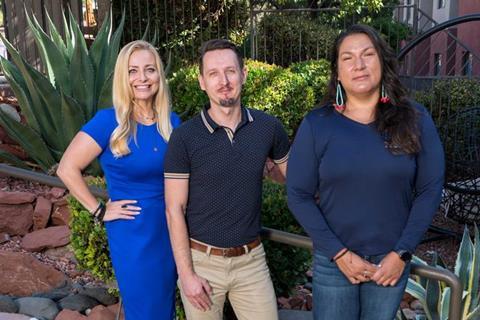A recent study led by researchers at the University of Arizona Cancer Center and Northern Arizona University found that Native American women were disproportionately affected by vaginal dysbiosis, a disruption in the balance of bacterial that increases the risk of human papillomavirus infection, which can cause cervical cancer.

In Arizona between 2016 and 2020, Hispanic and American Indian/Alaska Native women had the highest rates of cervical cancer, according to the Centers for Disease Control and Prevention.
“Despite vaccination, we still have high rates of cervical cancer within Latina and Native American populations,” said the paper’s senior author Melissa Herbst-Kralovetz, PhD, a professor and director of the Women’s Health Research Program at the U of A College of Medicine – Phoenix, and a member of the U of A Cancer Center and the BIO5 Institute. “Rates in Native American populations are the highest, and that’s why we focused our efforts on better understanding this disparity.”
The paper was published in Cancer Prevention Research. The pilot study was part of the Partnership for Native American Cancer Prevention, a 25-year program between the U of A and Northern Arizona University supported by the National Cancer Institute.
Indigenous communities
“The study is unique in that we are doing it through the lens of Indigenous people and researchers,” said Naomi Lee, PhD, an associate professor at NAU, explaining that the research team consists primarily of females from Indigenous populations and experts who have worked with diverse communities. “We are working with community members to gain their perspectives on various aspects of the project along with culturally competent ways to recruit and disseminate findings.”
READ MORE: Specific microbial hallmarks in vagina could indicate gynecological cancers
READ MORE: Researcher targets BV, a common infection affecting women
For the study, researchers collaborated with Native Americans for Community Action, a wellness clinic in Flagstaff, Arizona, to recruit 31 premenopausal women between the ages of 18 and 55. About half of the women were Native American.
Two vaginal swabs were collected from each study participant and analyzed. Researchers found that Lactobacillus microorganisms, which protect against invading pathogens as part of a healthy vaginal microbiome, were dominant in 58% of non-Native women compared with 44% of Native women.
Vaginal dysbiosis
Native American women also had higher rates of vaginal dysbiosis and elevated vaginal pH, leading to inflammation. Additionally, they were more frequently infected with high-risk human papilloma virus, or HPV.
“There’s really no previous data showing how that vaginal microbiome structure looks in these populations,” said Paweł Łaniewski, PhD, the study’s first author and a research scientist at the College of Medicine – Phoenix. “From other studies, we know that there might be some differences in the vaginal microbiome that can relate to HPV infection and cervical cancer.”
Researchers also found a connection between health disparities caused by sociodemographic and behavioral risk factors and a person’s healthy defense mechanisms. This may play a role in the higher prevalence of cervical cancer among Native American women.
The higher rate of cervical cancer among Native American women was previously attributed to a lack of screening, unequal access to health care and quality of care.
“It is setting the foundation to answer relevant Native women’s health concerns around sexual health, prevention and testing,” Lee said.
Social determinants
Ongoing work will include a longitudinal study, which evaluates multiple time points to determine the role of vaginal microbiota in HPV resistance or HPV clearance through the lens of the social determinants of health.
According to the CDC, social determinants of health are the conditions in which people are born, raised, work and live. They include a person’s community and neighborhood as well as their access to health care and education
“We know that HPV is the causative agent of cervical cancer, but your vaginal microbiome can dictate whether you clear that HPV with no problem or if you keep it and are then at higher risk for developing cancer,” Herbst-Kralovetz said. “If we could modulate the microbiome in women with HPV – and that’s what we’re thinking about for future studies working with the Cancer Center – then we could potentially intervene and prevent the progression to cervical cancer. We need all these interventions, including vaccination, working together to prevent cancer.”







No comments yet